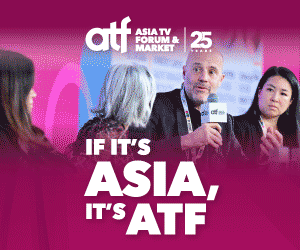
How much can 4G push video consumption in India? This is the big question in India’s US$16-billion media and entertainment industry.
Vodafone, Airtel, Aircel and every major telecom operator in India has launched 4G services over the last few months, opening up huge opportunities to monetise video.
In December 2015, the Mukesh Ambani-controlled Reliance Industries launched Lyf, a 4G-enabled phone, and Jio 4G services for employees only. The commercial launch is due by April this year.
At over 800 million viewers, India is the world’s second largest TV market. However it remains one of the most under-monetised, with revenues of just about US$7.3 billion. On most metrics – time spent, ad spend, average revenue per user – India is way behind China. One reason, arguably, is that the overwhelming number of India’s 164 million TV homes have only one television set because they believe watching TV is a family activity. This is, possibly, the single biggest reason for the rise of online video consumption in India.
Of India’s 319 million internet users, about 170 million have video-enabled smartphones right now. In 2014, online video cornered over 25% of the US$66 million digital advertising pie.
The last two years have seen some of the biggest TV players enter the OTT space, including Star India with Hotstar, Zee with Ditto TV, and Singtel/Sony/Warner with Hooq. Netflix launched in India in January, and Viacom18’s Voot is going up at the end of March as an advertising-supported on-demand (AVOD) service. There is also Balaji Telefilms’ ALT and a dozen other big players waiting in the wings.
“If you look at any metric – device penetration, bandwidth consumption, advertising, everything is growing by 35% to 40%. This market is poised for significant growth,” says Uday Sodhi, executive vice president and head of Sony Pictures Networks India’s digital business.
He reckons that 4G will mean lots of filmand long-form consumption.
Not everyone agrees. “Apart from snacking content, I don’t see long-form video content consumption going up on wireless. Less than 7% of Netflix’s consumption is on wireless. The real consumption will remain wireline and traditional,” says Punit Goenka, Zee Entertainment Enterprise...
How much can 4G push video consumption in India? This is the big question in India’s US$16-billion media and entertainment industry.
Vodafone, Airtel, Aircel and every major telecom operator in India has launched 4G services over the last few months, opening up huge opportunities to monetise video.
In December 2015, the Mukesh Ambani-controlled Reliance Industries launched Lyf, a 4G-enabled phone, and Jio 4G services for employees only. The commercial launch is due by April this year.
At over 800 million viewers, India is the world’s second largest TV market. However it remains one of the most under-monetised, with revenues of just about US$7.3 billion. On most metrics – time spent, ad spend, average revenue per user – India is way behind China. One reason, arguably, is that the overwhelming number of India’s 164 million TV homes have only one television set because they believe watching TV is a family activity. This is, possibly, the single biggest reason for the rise of online video consumption in India.
Of India’s 319 million internet users, about 170 million have video-enabled smartphones right now. In 2014, online video cornered over 25% of the US$66 million digital advertising pie.
The last two years have seen some of the biggest TV players enter the OTT space, including Star India with Hotstar, Zee with Ditto TV, and Singtel/Sony/Warner with Hooq. Netflix launched in India in January, and Viacom18’s Voot is going up at the end of March as an advertising-supported on-demand (AVOD) service. There is also Balaji Telefilms’ ALT and a dozen other big players waiting in the wings.
“If you look at any metric – device penetration, bandwidth consumption, advertising, everything is growing by 35% to 40%. This market is poised for significant growth,” says Uday Sodhi, executive vice president and head of Sony Pictures Networks India’s digital business.
He reckons that 4G will mean lots of filmand long-form consumption.
Not everyone agrees. “Apart from snacking content, I don’t see long-form video content consumption going up on wireless. Less than 7% of Netflix’s consumption is on wireless. The real consumption will remain wireline and traditional,” says Punit Goenka, Zee Entertainment Enterprises’ managing director and CEO.
Bibhu Prasad Rath, regional cable company Ortel Communications’ president and CEO, says “4G or any other mobile platform for that matter will have speed limitations compared to wireline networks like cable. On the move people are happy to compromise on speed but want connectivity. At home and offices, they will look for higher speeds and will be happy to compromise on mobility. So I don’t see a big shift of home users from cable to 4G”.
You could swing the argument any way depending on data and your perspective.
Take data. Even in markets with 4G/LTE networks, not all networks in all countries deliver on the same high-speed promise, and most OTT brands report that the short snacky stuff sells most, for now.
India’s different geographies present different opportunities. “The probability of users upgrading is higher in the metros as they have been already using data,” says Sunil Sood, Vodafone India’s managing director and chief executive.
But that is not everyone’s experience. “The maximum growth for Ditto (Zee’s online video brand) has come from rural markets where electricity is an issue,” he says.
Srini Gopalan, Bharti Airtel’s director, consumer business, adds another element. “In [the Indian states of] rural Bihar and UP, people put their phones on all night and download 2GB of data, movies that are then resold to customers because there is no power”.
“As a network developer this presents an opportunity on the soft underbelly – if we can organise this we can monetise it. A smartphone with better connectivity can kill piracy and give artists more opportunity. More usage will move to legal sources,” he says.
Whether it pushes short-form, long-form video viewing in rural India, the fact remains that 4G will drive growth, especially if it can move past bandwidth and price constraints.
Currently 4G services are priced between Rs80/US$1.20 and Rs125/US$1.90 per gigabyte of data on par with 3G, with a lot more thrown in. When the five networks start competing more actively, data prices are expected to drop to Rs10/US$0.15 to Rs50/US$0.77 per gigabyte.
There are two things to watch out for.
One, the power play between entertainment and telecom firms. More than five years ago, telecom operators’ insistence on keeping 70%-80% of the revenues fostered an ecosystem of apps and off-deck services that helped content creators to bypass telecom firms.
Google’s YouTube, which shares an average of 50% with publishers, has also set the bar high.
“If the content is strong enough we should get a fair share – 30%-40% is reasonable,” Zee’s Goenka says.
The second challenge is how to get a subscription service going.
In the U.S., where cable prices range between US$50 and US$80 a month, Netflix, at US$8-US$12 could take off.
In India, “consumers pay US$3.80 for 300 channels on broadcast – including sports, kids and international content. That is the reference,” says Gaurav Gandhi, Viacom18 Digital Ventures’ chief operating officer.
“Therefore we have a challenge in cracking a subscription price point for video on demand in India,” he adds.
At about US$7.70 a month, Netflix’s India price for primarily English content in a multi-lingual market has raised eyebrows.
So while 4G will push consumption of video, how much, in what form and at what price is an open question for now.
Published on ContentAsia's Issue One 2016, 23 March 2016



















